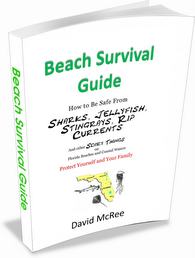News reports have been flying fast and furious since tropical storm Debby began affecting Florida beaches on Saturday, June 23, 2012. Let’s have a look at some of the reports and see where the beaches stand today.
Was Pass-A-Grille beach really wiped out? Far from it. I posted some post-Debby pictures of Pass-a-Grille beach here yesterday.
Many of our beaches were quite enlarged due to recent additions of large quantities of sand. After many years of planting and cultivating sea oats on the diminutive dunes of the central and southwest coast islands and beaches, many beaches had well developed dunes.
Debby definitely had an impact on both the dunes and the beaches. Most likely, not as much sand was lost as initially suspected. Some of it has just been rearranged. Natural currents will restore some of the beaches to some extent over time. But the beaches that are prone to erosion took a heavy hit, as would be expected. Upham Beach in St. Petersburg is an example.
Any structure on the beach that is “protected” by a seawall suffered greater erosion on its adjacent beach because the wave interaction with seawall causes more sand to be lost than when the waves interact with a natural dune.

Click the photo to watch the video about Pinellas County beach erosion. No big news, just some general info and comments by a USF researcher, Dr. Ping Wang.
The Tampa Bay Times reported that USF’s Coastal Research Lab indicated the following beaches had the worst erosion: Pass-a-Grille, south of the snack bar; Upham Beach (no surprise), Sunset Beach, and Sunshine Beach (on John’s Pass).
Indian Rocks Beach had some “pretty bad” erosion, but the dunes did their job and protected structures near the beach.
This is one of the best summaries of Pinellas County beach effects from Debby, but keep in mind that the linked article represents an early assessment and the accompanying photos were taken before the storm surge subsided, so the situation is made to look much worse than it actually is. Several county beach parks were closed because of the storm, so check with the county if you need information on the beaches at Sand Key Park, Fort Desoto Park and Fred Howard Park.
Anna Maria Island Beaches suffered some erosion, particularly at the south end of the island, and on beach properties that have sea walls on the Gulf beach. But to put it in perspective, I grew up going to the beaches on Anna Maria back in the 1970’s and the beaches were all much narrower then than they are now, even after Debby. And the beaches in the 70’s were perfectly normal and beautiful to us back then.
Some of the Sarasota beaches took a really hard hit, particularly on southern Siesta Key and Manasota Key. This is an excellent report and a very informative video on the effects Debby had on Sarasota beaches.
From Sanibel and Captiva, here are some great photos of what the island and it’s beaches looked like during Debby.
Looks like Captiva experienced some fairly serious beach erosion, but at this point…”They’ve got to try to figure out three things – how much sand was lost, where it went with tide patterns pushing it – and whether or not that sand will get pushed back naturally.” Here is an excellent report, with video, of Captiva beaches. The bottom line is that the beaches are still there, they just look a little different, and perhaps more interesting to some.
The story is similar all the way down the coast (except for Marco Island). A lot of sand got moved around, but much of it is likely to be returned to the beaches with normal tides and water currents.
Naples beach photos after Debby.
Marco Island Beaches seem to have avoided any major erosion from Debby.






